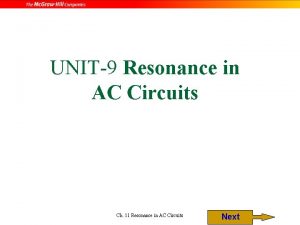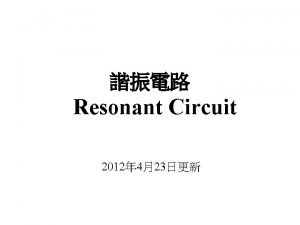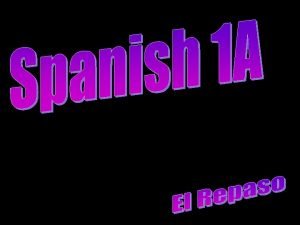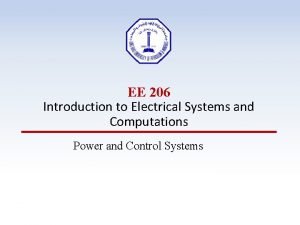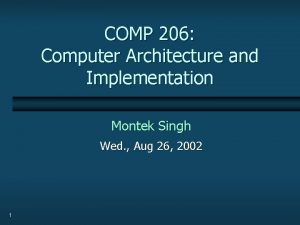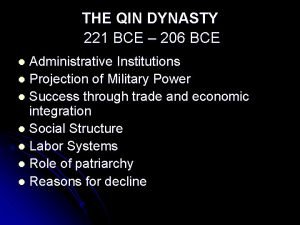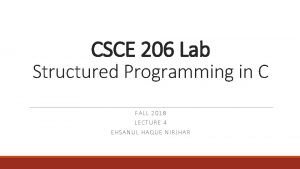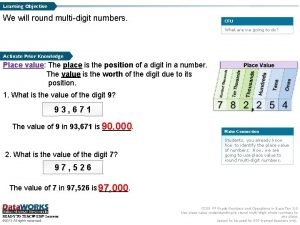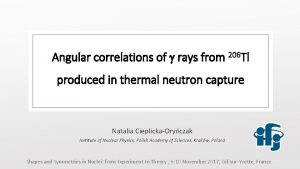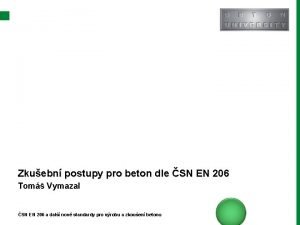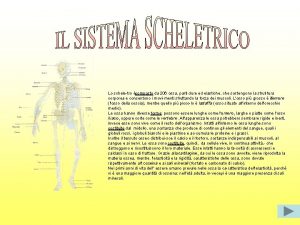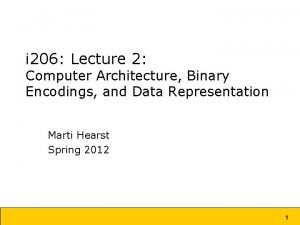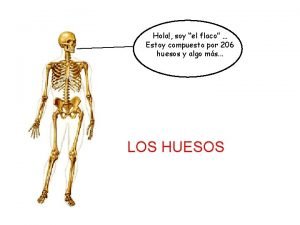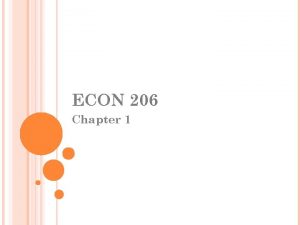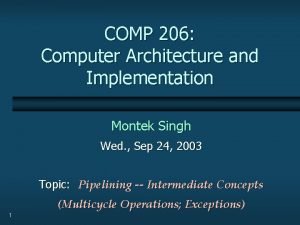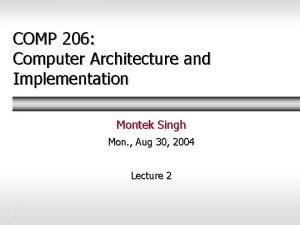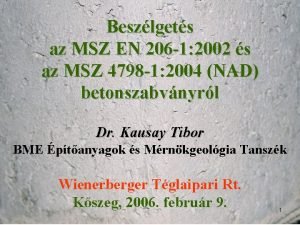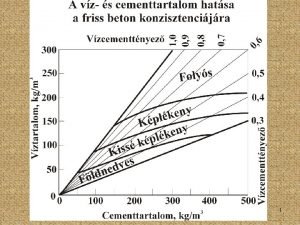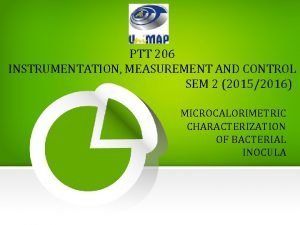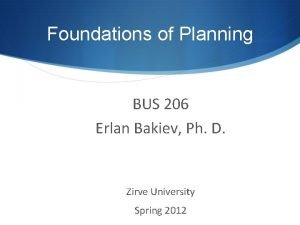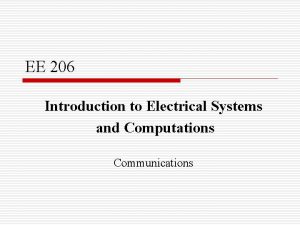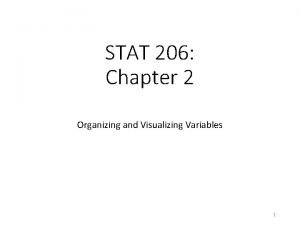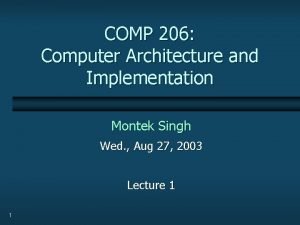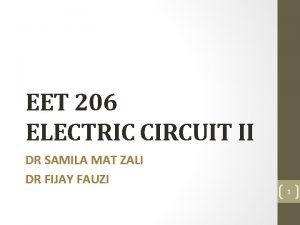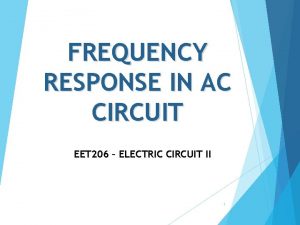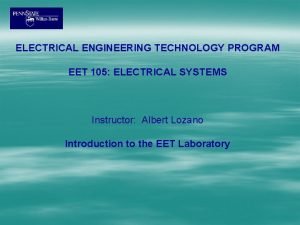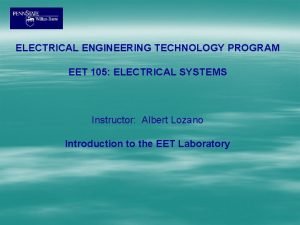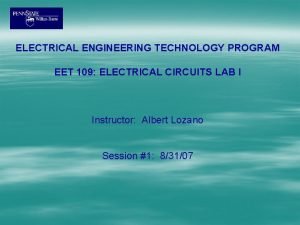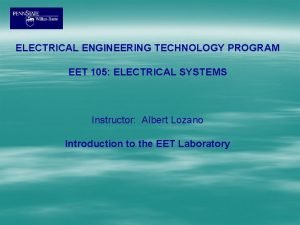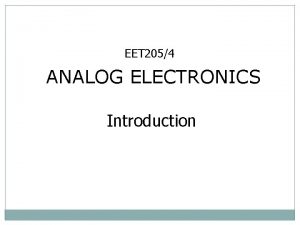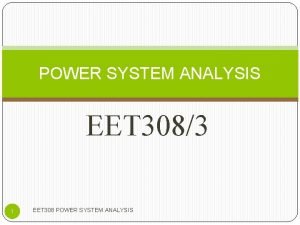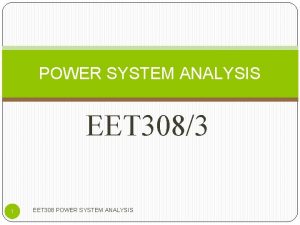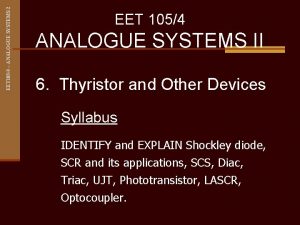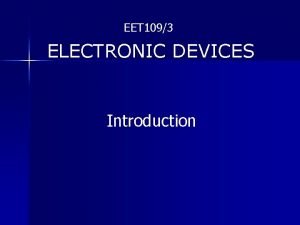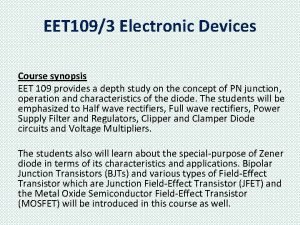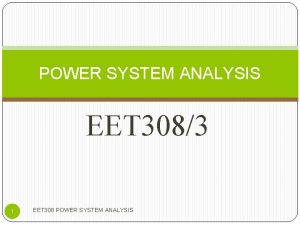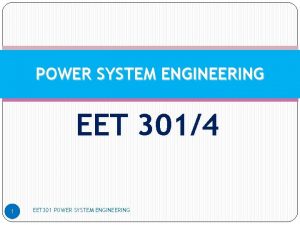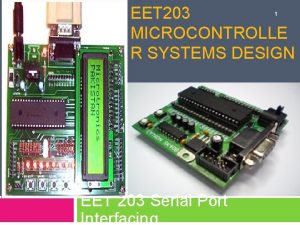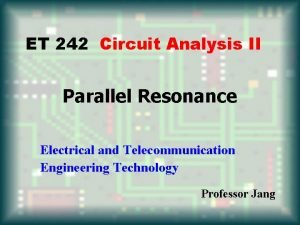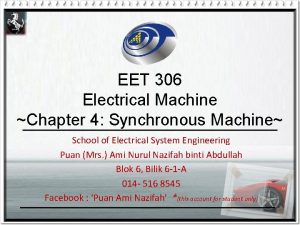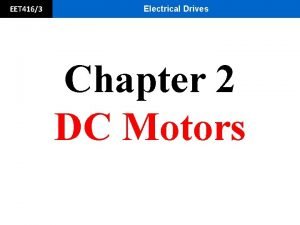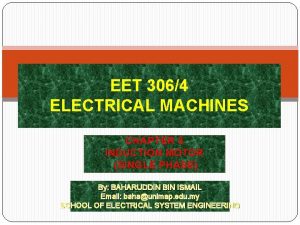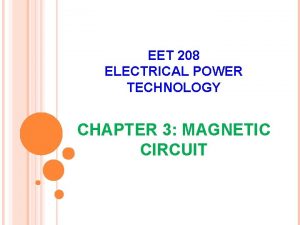CHAPTER 4 RESONANCE CIRCUIT EET 206 ELECTRICAL CIRCUIT


























- Slides: 26

CHAPTER 4 RESONANCE CIRCUIT EET 206 - ELECTRICAL CIRCUIT II 1

CHAPTER OUTLINE �SERIES RESONANCE �PARALLEL RESONANCE 2

RESONANCE Resonance is a condition in an RLC circuit in which the capacitive and inductive reactance are equal in magnitude, thereby resulting in a purely resistive impedance. Resonance also known as center frequency. The features of resonance: • • The impedance is purely resistive, Z = R; The supply voltage Vs and the current I are in phase, so cos q = 1; The magnitude of the transfer function H(ω) = Z(ω) is minimum; The inductor voltage and capacitor voltage can be much more than the source voltage. EET 206 - ELECTRICAL CIRCUIT II 3

APPLICATION �TV RECEIVER �RADIO RECEIVER �TUNED AMPLIFIER EET 206 - ELECTRICAL CIRCUIT II 4

IMPORTANT PARAMETER IN RESONANCE • • Resonance Frequency, ωo Half-power frequencies, ω1 and ω2 Bandwidth, Quality Factor, Q EET 206 - ELECTRICAL CIRCUIT II 5

SERIES RESONANCE EET 206 - ELECTRICAL CIRCUIT II 6

Resonance results when imaginary part of the transfer function is zero. Value of ω satisfies this condition is called resonant frequency, ω0. EET 206 - ELECTRICAL CIRCUIT II 7

�The frequency response of the circuit’s current magnitude: 8

Average power dissipated by RLC circuit is: Power at resonance: At certain frequency, ω= ω1, ω2, the dissipated power is half the maximum value. Hence ω1 and ω2 are called the half-power frequencies. 9

�Quality factor, Q is ratio of its resonant frequency to its bandwidth. A higher value of Q will result a smaller bandwidth. A lower value of Q will cause a larger bandwith. �Bandwidth, B: 10

SELECTIVITY • • • Selectivity defines how well a resonance circuit response to a certain frequency and reject against all others. A smaller/narrower the bandwidth, the greater selectivity A larger/wider the bandwidth, the least selectivity. 11

A resonant circuit is designed to operate at or near its resonant frequency. It is high-Q circuit when its quality factor is equal to or greater than 10. When , the half-power frequencies are: 12

EXAMPLE In the circuit below, R = 2Ω, L = 1 m. H, and C = 0. 4 μF. a) Find the resonant frequency and the half-power frequencies b) Calculate the quality factor and bandwidth c) Determine the amplitude of the current at ω0, ω1 and ω 2. 13

SOLUTION (a) The resonant frequency is METHOD 1: The lower half-power frequency is Similarly, the upper half-power frequency is 14

(b) The bandwidth is The quality factor is 15

METHOD 2: Alternatively, we could find From Q we find Since Q > 10, this is a high-Q circuit and we can obtain the half-power frequencies as 16

17

PARALLEL RESONANCE 18

�Resonance occurs when the imaginary part of Y is zero; 19

�The current amplitude vs frequency for parallel circuit: 20

�Replace R, L & C in expressions for series circuit with 1/R, C & L. �High-Q circuit 21

PARALLEL RESONANCE If R=8 kΩ, L=0. 2 m. H and C=8 F, calculate n ωo n Q and n ω1 and ω2 n Power dissipated at ωo, ω1 and ω2. 22

PARALLEL RESONANCE Solution : Resonant frequency Bandwidth Quality Factor 23

PARALLEL RESONANCE Since Q ≥ 10 , we can regard this as high-Q circuit. Hence : 24

PARALLEL RESONANCE Power dissipated at ω = ωo Power dissipated at ω = ω1 , ω2 25

Summary of the characteristic of resonant RLC circuits CHARACTERISTIC SERIES CIRCUIT PARALLEL CIRCUIT Resonant frequency, ω0 Quality factor, Q Bandwidth, B Half-power frequency, ω1 ω2 For 26
 What is resonance in ac circuit
What is resonance in ac circuit Rlc
Rlc The verb estar (p. 107)
The verb estar (p. 107) Ee206
Ee206 Comp 206
Comp 206 Qin dynasty (221-206 b.c.e.)
Qin dynasty (221-206 b.c.e.) Arizona fair wages and healthy families act
Arizona fair wages and healthy families act Csce 206 tamu
Csce 206 tamu Round 787 206 to the nearest ten
Round 787 206 to the nearest ten 206 tl
206 tl Fct beton
Fct beton 206 ossa
206 ossa 206 to binary
206 to binary La pelvis es un hueso largo corto o plano
La pelvis es un hueso largo corto o plano Econ 206
Econ 206 Comp 206
Comp 206 Make the common case fast example
Make the common case fast example Cnom beton
Cnom beton En 206-1
En 206-1 206 ptt
206 ptt Psir 206
Psir 206 Psir 206
Psir 206 Plan bus 206
Plan bus 206 Ee 206
Ee 206 Seattle utility discount program
Seattle utility discount program Stat 206
Stat 206 Comp 206
Comp 206
